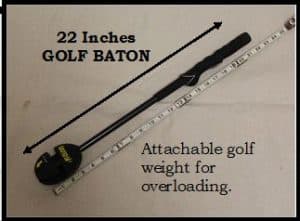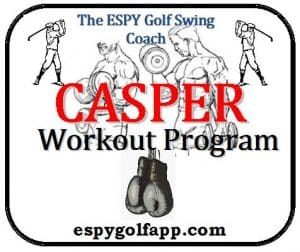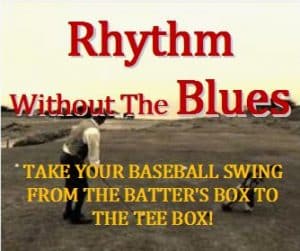THE QATSPY GOLFER’S SPORTS PAGE
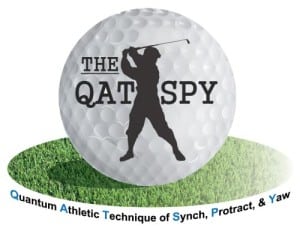
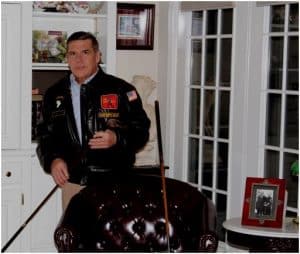
By: Charles W. Boatright
How to Establish a Method that can Allow the Golfer to Develop a Self-Coaching Technique- Their Mental Game of Golf
There is a proven and very well-established method that can allow the golfer to develop a self-coaching technique that can improve the golfer’s mental game of golf during practice sessions by 50 percent. This proven method is referred to as Mental Continued Incrementalism. In the Japanese language, there is a similar term, called Kaizen, which means continuous improvement. This allows the average golfer to develop a golf swing sequence, along with their mental game of golf. This Mental Continued Incrementalism involves the neuromuscular junction development.
All of us, especially golfers, have an ability to achieve an incremental or continuous improvement where we can build on what we have previously learned through experiences in other sports, like baseball. This process is called Apperception, which is the basis for the ASPEN Self-Coaching Technique. One example of Apperception is where the golfer could compare their golf swing vs. baseball swing sequence. This comparison process gives the golfer the ability to hard wire their subconscious mind directly with key muscles, using familiar images and well-developed motor skills. Sports Psychologists refer to this process as using Sports Imagery and Context-Based Learning.
The subconscious mind, the golfer’s mental game of golf, provides a huge advantage for the golfer to make significant gains in their golf game on the golf course. The subconscious mind has an incredible advantage and ability of boosting our training and practice sessions by perfecting the golfer’s muscle memory., The result of this is hard wiring, or neuromuscular junction. Here are just four advantages of relying on the subconscious mind’s performance:
- FIRST– the subconscious mind has no concept of time.
- SECOND– the subconscious mind does not rest or sleep.
- THIRD– the subconscious mind does not distinguish between the actual event and the virtual world of imagination.
- FOURTH– and, the most important part of the mental game of golf is if there is a conflict between how the golfer’s conscious mind is coached and how the subconscious mind performs on the golf course. The subconscious mind wins the battle.
Of these four conditions describing the golfer’s mental game of golf, the FIRST, THIRD, and FOURTH have the biggest impact on developing the classic golf swing fundamentals by:
- FIRST– The subconscious mind doesn’t have any concept of time. This means that the golfer with a slow pace could work their way through their golf swing sequence until they are proficient at each element. This slow place works during the golfer’s warm-up sessions before a round of golf.
- THIRD– By using mental images, this allows the golfer to train their subconscious mind by hard wiring. This is similar to a person pulling on a pair of Galaxy s8 virtual goggles while they are experiencing a real life experience or situation.
- FOURTH– If the golfer’s practice and training sessions don’t reflect their golf game, the golfer’s subconscious mind will disregard their training. This is usually evident when the golfer can carry a new golf swing technique for the first three holes before they experience a disconnect. The golfer’s subconscious mind just took over their golf game.
Overcoming the Main Obstacle to Improving the Golfer’s Mental Game of Golf
Most of my articles that I write concern coaching techniques that are in regard to the golfer’s mental game of golf, or developing muscle memory. This is the missing link, as the name Neuromuscular Junction implies.The two main reasons for this is ONE, the famous quote by Bobby Jones, Sr. that Golf is a game that is played on a five-inch course – the distance between your ears. The SECOND reason I focus on the golfer’s mental game is because of the amount of time professional golfers spend on their golf game, between 20 to 40 hours per week; and they still have issues trusting their golf game, once on the course.
The golfer’s mental game of golf philosophy: The golfer must practice how they play; and play how they practice!
An example of this was at the 2018 Sony Open, where Jordan Spieth, in an interview with Golf Channel, stated that- Professional golfers have trouble trusting their golf game. Jordan Spieth’s comment was in light of these statistics that most professional golfers spend between 20 to 40 hours per week just working on their game and still experience a disconnect. One reason for the disconnect is lack of their applying the fourth element above, the conflict between the conscious mind training and the subconscious mind’s performance. We may very well learn the golf swing fundamentals and mechanics using our conscious mind, but I can guarantee you that we will perform the golf swing sequence using our subconscious mind on the golf course. I developed this quote to help me understand my golf game better.
The golfer might look at these four Elements as obstacles to improving their golf game, but, in actuality, these provide a huge advantage for the golfer. Here’s WHY- The subconscious mind has no concept of time, doesn’t sleep, doesn’t distinguish between a virtual experience and an actual experience (THE MAIN ADVANTAGE), and the subconscious dominance in the golfer’s golf game. To heighten the golfer’s subconscious mind’s influence in the mental game of golf, the golfer needs to develop key muscle memory, or their Neuromuscular Junction in their golf game
Yogi Berra had two great quotes about baseball that can be easily applied to the golfer’s game as well:
- Baseball is 90% mental and the other half is physical.
- You don’t have to swing hard to hit a home run. If you got the timing and technique, it’ll go.
My grandfather, who was a New York Yankees fan, added the words and Technique to Yogi’s quote.
During my Xerox Box Golf Research Project that I did for a Kinesiology Project, I discovered three key muscles that the golfer needs work on to help develop their subconscious mind’s performance. These muscles are: the Pronator Quadratus muscle for the SYNC element, Hypothenar for the PRESET element, and the Brachio-Radialis muscle for the YAW element. By no means are these the only muscles used to establish the golfer’s golf swing sequence, because there are 640 muscles in the human body; and the golfer uses the majority of these muscles in performing their golf swing sequence. But, if the golfer could concentrate on these leading muscles, it would eliminate the confusion and need for swing thoughts that produce inconsistencies.
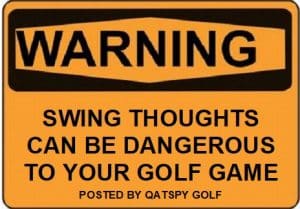
What these three muscle memories and four subconscious elements mean to the golfer’s game is that the golfer can literally work on their golf swing mechanics and fundamentals at any pace, and anywhere they go to develop a consistent, reliable, and repeatable golf swing sequence, based on three simple elements of SYNC, PRESET, and YAW. We perform these three elements instinctively everyday, so we just need to convince our subconscious mind to adopt them into the golf swing sequence.
I dedicated five sections in my book, The ESPY Golf Swing Coach, to the mental game of golf, or what I refer to as the mental horsepower, consisting of persistence, positive thinking, and developing muscle memory to improve the golfer’s mental game of golf. And the simple SYNC, PRESET, and YAW elements are the same elements that are in the typical baseball-type swing sequence.
Taking the Baseball Swing Sequence from the Batter’s Box to the Tee Box for a Classic Golf Swing
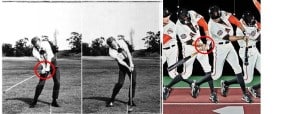

As illustrated in the two Figures above from the research that I conducted during my Xerox Box Golf Research Project, I was able to successfully compare the golf swing vs. baseball swing using time-lapse photography. The strongest comparison between these two swings shows how the wrists are synced and preset in the initial part of the golf swing sequence. This Sync/Preset technique provides a significant muscle memory that the golfer can actually work on anytime or any place to develop their routine.
Here’s WHY this Sync/Preset maneuver works for the golfer on the golf course. How many times does a golfer remember playing either baseball and/or softball before, and stepping into the batter’s box and thinking about their baseball swing mechanics or fundamentals? I would guess NEVER! The only thing the batter remembers is feeling the bat in their hands and concentrating on the pitch, while trying to pick up the movement of the baseball and how the threads are rotating. The batter’s hands/wrists and lower forearms are already preset in the baseball-type swing.
I use as one of my golf coaching props a pair of boxing gloves. At first, it seems pretty odd to use a pair of boxing gloves to teach the golf swing sequence. But the boxing gloves are a great way to identify the wrist and lower forearm and how they are Sync/Preset. The wrist is not where the golfer would wear their wristwatch, for this is the lower forearm. The wrist consist of two of the strongest and most dexterous muscles, called Thenars (Thenar and Hypothenar) shown below, that have direct contact with the handle of the golf club. That should grab every golfer’s the attention! Even Ben Hogan referenced the Thenars and Hypothenars in his commentaries.


Here’s how the golfer can take a simple golf baton, show below, and develop their own training technique to establish the essential mental game of golf. In my training sessions, I preform the following swing sequence using a mental image for each SYNC, PRESET, and YAW element, starting slow at first before actually reaching natural pace.The following sequences are in reference to a right-handed golfer:
- SYNC– CAMMING the right Pronator Quadratus muscle, similar to how a boxer would rotate the right wristband 90 degrees clockwise.
- PRESET or PROTRACT– CAMMING-OVER the left Hypothenar, like how a pinball machine flipper would work, or how an Ax blade would be rotated 90 degrees clockwise.
- YAW– Flexing, or bending, the forearm at the elbow with the right Brachio-Radialis muscle. This is like a hammer motion for driving a nail. The Brachio-Radialis muscle is a unique muscle in the golf swing sequence in that it can pronate, supinate, and flex the forearm.
In the Figure below is a golf baton that can be made from an old or a discarded golf shaft with an attachable weight. This is a great training device to develop the key muscle memory listed above. For more information on the golf baton, please select the image below:
How a Vietnam War POW used His Mental Game of Golf to Survive at the Hanoi Hilton for Over Seven Years
I was able to confirm these golf swing components that I discussed above while I was attending a business meeting at the Hattiesburg Country Club. I was a Grid Engineer with a Mississippi utility before I retired.
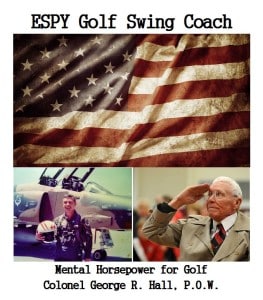
I had the rare opportunity to interview a Vietnam War POW while I was attending a business meeting at the Hattiesburg, MS Country Club. As I was leaving, I met Colonel George Robert Hall.
Some people might not recall the details of the Vietnam War, but this war produced some of the most outstanding people we have in our country and communities. Their accomplishments and achievements should not be forgotten or diminished, compared to the achievements of the Greatest Generation (Veterans from World War 2 and Korean Conflict). We can learn a tremendous amount from these Vietnam Veterans, and especially the POW’s, about their mental discipline.
One veteran of the Vietnam War was a P.O.W. (Prisoner Of War) held at the infamous Hanoi Hilton. U.S. Air Force Pilot, Colonel George Robert Hall was shot down over North Vietnam on September 27, 1965 flying a RF-101. The reason I noted Colonel Hall’s situation as a P.O.W. in an article about golf is because he used his love of golf to sustain himself through horrendous conditions and treatment of being a P.O.W., while held with others at the Hanoi Hilton.
Colonel Hall’s Mental Game of Golf
In Colonel Hall’s case, his virtual world was a seven-and-a-half foot square cell where he mentally created his golf courses that he mentally played in his confined cell. He memorized every aspect of each course that he had played, down to each hole, tree, rough, fairway, and the speed of the greens. Every day Colonel Hall would go through his routine until he was released on February 12, 1973, with 590 other P.O.W’s.
NOTE: Golf can provide a significant advantage to our Veterans returning home from the battlefield to deal with their anxieties and PTSD. I developed Operation Dog Tag for Veterans and communities to use to help our Veterans. Please refer to details at the end of this article.
During his confinement, Colonel Hall heightened his mental and visualization skills to develop a virtual golf course. Colonel Hall, in his mind, created what he referred to as his Pebble Beach. Colonel Hall imagined himself dressing for his round of golf each day by putting on his socks, pants, shoes, T-shirt, and golf shirt, and picking up his golf cap and golf bag and heading to the course.
Colonel Hall imagined standing behind the ball to get his alignment, going through his setup routine, presetting his wrists, and taking the club back up to the top of his swing. Colonel Hall felt his club dropping back down into the slot. Colonel Hall focused on the part of the golf ball that he wanted to impact. He mentally created the sound that the clubface made with the ball and held his photo finish position.
Colonel Hall mentally maintained his golf swing muscle memory, even as a P.O.W. far removed from the golf course. Upon Colonel Hall’s release from the Hanoi Hilton, the first thing that he wanted to do was to play his first round of golf, and have his first cup of ice and Coca-Cola .
Colonel Hall did a little better than that. In less than six weeks from his release on February 12, 1973, he was playing on one of the biggest stages in golf. On March 21, 1973, Colonel Hall, within six weeks, was invited to play in the 1973 Greater New Orleans P.O.W. Pro-Am Open, where he shot a 76, his handicap of four (4).

My Interview with Colonel George Robert Hall:
Question No. 1
Boatright: “What did you use as a golf club?”
Colonel Hall: “I used my left thumb to represent the handle of the club, and placed my right hand around the left thumb on a stick. This also gave me the opportunity to maintain the correct grip pressure on the handle of the club. This also allowed me to preset my wrist action in the golf swing, as I did when I played golf on a regular basis stateside. My main objective was to feel my wrist action in the golf swing.”
Question No. 2
Boatright: “What was the key component in your golf swing to give you the most realistic feel, since you did not have an actual golf club or experience the results of your golf shots?”
Colonel Hall: “Everything had to be associated with my hands, thumbs, and wrists. I could not think about the floor as the ground for my point of reference. I could preset my wrist action in the golf swing in the proper golf swing sequence. If I could feel how the forearms and wrist action in the golf swing was set, I could virtually set and execute my golf swing.”
Question No. 3
Boatright: “So, your point of reference was waist level at your hands?
Colonel Hall: “Yes, to be more specific, my thumbs. I kept all the impact, essentially, at the level of my hands and thumbs, similar to how a baseball player uses a bat to take batting practice. Matter of fact, I thought about playing tee ball in my cell.”
Question No. 4
Boatright: “I have centered my muscle memory on two points, the base of my wristbands, the Pronator Quadratus Muscles, and the base of the thumb called the Thenars. Did you center on keying in on a particular muscle to execute your golf shot?”
Colonel Hall: “Yes, I read about how Ben Hogan described how he used his Thenars as being a key part of his golf swing to pronate and supinate his wrists and hands. This allowed him to open and close his clubface properly.”
Colonel Hall’s Question: “How did you determine the significance of the Thenars in your golf swing sequence?”
Boatright Answer: “In Kinesiology, my professor, Dr. Bunch, stressed the importance of three muscles used in the baseball-type swing to reduce injuries to the wrists and lower forearm. The wrists and lower forearm muscles I focus on are the Pronator Quadratus, Brachio-Radialis and the Thenar Muscles.
The Brachio-Radialis Muscle is a particularly unique muscle in the golf swing sequence since it can pronate and supinate and flex (or bend) the forearm at the elbow. The Thenars are unique in that they are the strongest and most dexterous muscles in the wrist action in the golf swing that have direct contact with the golf club handle.”
Colonel Hall: Now you gave me some validation to concentrate on the muscle memory I used in my golf swing sequence.
Boatright: Yes sir, I refer to my muscle memory sequence as The Critical Swing Path, keying in on the wristband muscle, the Pronator Quadratus Muscle.
Question No. 5
Boatright: “Have you ever read or seen a video series by Mr. Eddie Merrins, aka The Little Pro, where he focused on swinging the handle of the club and not the club. Similar to how you use your left thumb or stick to represent the handle of the club and how I use my right thumb to represent the clubface?”
Colonel Hall: “No I haven’t, but that is interesting how you use your right thumbs to represent the clubface. The more I think about it, that goes along with the same technique of having a strong or weak golf grip by the placement of the right thumb. I was doing the same thing, but I didn’t consciously go to that level or detail, like you did.”
Boatright: “If you think about the difference between the weak and the strong grip, most generally, it entails the placement of the right thumb on the handle of the club. That was the reason I think swinging the handle of the club is an important part to improving the golfer’s game and in what you proved.”
Question No. 6
Boatright: “So you interface with your golf swing by moving the virtual golf ball from the ground, up to your hands?”
Colonel Hall: “I found out by moving the ball from the floor of my cell to my thumbs gave me a better point of reference and feel in executing my golf shot. I had a more realistic golf shot and sound.”
Boatright: “You definitely proved that during the Pro-Am.”
Question No. 7
Boatright: “I’ve got to ask this question. What were your guards thinking when they saw you making a virtual golf swing with your hands, wrists, arms, and shoulders in your cell?”
Colonel Hall: “Probably, they were thinking that they have finally broken me, and I lost all touch with reality.”
Boatright: “If I had been your guard in a country where golf wasn’t a popular sport, or even heard of, I would think the same thing. That you lost your mind!”
For a more in-depth story of Colonel Hall’s story as a P.O.W., please refer to my article written in November of 2015: IMPROVING YOUR GOLF GAME WITH SIMPLE MENTALIZATION TECHNIQUE!
The Xerox Box Golf Project
Talking with Colonel George Robert Hall provided me with the important background information that I needed for my Xerox Box Golf Project. One of the biggest obstacles in golf is practicing how we mentally play. What the golfer thinks works one day doesn’t even work the very next day. This is the Dr. Jekyll and Mr. Hyde syndrome that I discussed my Xerox Box Golf Project.
Colonel Hall: Before ending our interview, Colonel Hall: “What is this Xerox Box Golf Project?”
Boatright: I explained to Colonel Hall that I had three Xerox boxes full of data, consisting of time-lapse photography and research data. Two boxes were labeled, “THIS DOES NOT WORK.” One three-quarter-filled Xerox box was labeled, “THIS WORKS.” The partially filled box, “THIS WORKS,” contained techniques that I was able to replicate day-after-day, without fail, for a consistent golf swing.
Colonel Hall: Which box does my interview go into?
Boatright: In the Xerox Box Labeled THIS WORKS, because you proved what I was taught by my grandfather, Hemi Q. Boatright, since I was 12 year old.
Colonel Hall: With a last name of Boatright, are you related to P.J. Boatwright, Jr.?
Boatright: He was my distant cousin, his 4 X great-grandfather and my grandfather were brothers.
What Colonel Hall provided me was his repetitiously practiced golf swing in his prison cell that proved the importance of the mental game of golf. Colonel Hall, playing on one of the biggest stages in golf, at a Pro-Am just six weeks after his release from North Vietnam’s Hanoi Hilton, proved Bobby Jones’ quote.
Colonel Hall also proved that downtime, or not being on a golf course, does not have to limit your golf practice or workout routine. Focusing on the wrist action in the golf swing proves two quotes by Yogi Berra:
- Baseball is 90 percent mental, and the other half is physical.
- You don’t have to swing hard to hit a home run. If you got the timing, it’ll go.
Operation Dog Tag- Helping Veterans Returning Home

Addressing the Veterans’ physical and medical conditions is why I have developed Operation Dog Tag to be able to provide a platform to help people to connect with Veterans and develop a friendship. You don’t have to have all the answers, just the ability to listen to our Veterans’ stories.
The golf course offers our Veterans a mental and physical avenue to deal with the issues they are presently dealing with:
- Feeling apprehensive
- Feeling powerless
- Having a sense of impending danger, panic, or doom
- Having an increased heart rate
- Breathing rapidly
- Sweating
- Trembling
- Feeling weak or tired
One of the best opportunities we have to help our Veterans is to extend an offer to play golf with them and become a friend.
FREE– Below are links to the Operation Dog Tag:
Section 1- Operation DOG TAG | GOLF CBT Intervention for PTSD
Section 2- Operation DOG TAG | Objectives and Scope
Section 3- Operation DOG TAG| STRUCTURE GUIDELINES
Operation Dog Tag is FREE for Veterans and other organizations to use to help set up Golf teams and Clubs.
To learn how the sport of golf can offer our Veterans an opportunity to help them deal with returning home, please purchase your copy of The ESPY Golf Swing Coach from the links below, or visit your local bookstore:

My book can also be purchased at Edwin Watts Golf Store in Jackson, Mississippi. Phone No. 601-956-8784
820 East County Line Road, Ridgeland, MS 39157
My book can also be purchased on-line at:
Amazon.com
Barnes & Noble
Health and Fitness Program Golf Exercise for Power
This book is based on a self-coaching forum (ASPEN Pyramid) that provides the beginner and advanced single-digit handicap golfer with a safe, ergonomic classic golf swing for more power and control, without debilitating injuries that are common with some modern-day golf swings. As part of the ESPY Golf Swing Coach is a workout program designed especially for golfers and an effective diet program detailed below.
Please take advantage of my SR-925 Diet Program, where I lost 6 inches in my waist in 3- months (FREE of CHARGE) with the CASPER Workout Program, detailed in Section 20 of my book, great golf swing workout:
One component in my CASPER Workout Program that I follow is using a Medicine Ball to perform what I call Stocking the Shelves, illustrated below in the figure:

Please include an exercise routine in your weekly schedule.
ESPY Golf Swing Coach- Rhythm Without the Blues
Also, learning The ESPY Golf Swing Coach process is an excellent way to develop Rhythm without experiencing the Blues in your golf game for confidence; learn how to take your baseball-style swing from the batter’s box to the tee box.
THE LOCKER ROOM a source for golf tips
Please visit “The Locker Room” for an Index of all my golf articles to improve your golf game and life. Discover how you can take your baseball swing from the batter’s box to the tee box.
Learn How to take your baseball-style golf swing from the batter’s box to the tee box.
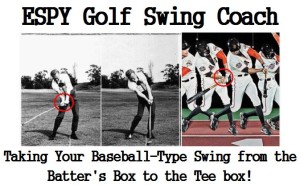
Taking your baseball-type swing from the batter’s box to the tee box.
(Time-lapse photography that I reviewed during my Xerox Box Golf Research Project comparing the golf swing vs. the baseball swing and how similar the Sync/Preset Maneuver are in both swings.)
For Comments or questions please contact me at 1-888-514-1228 Mon – Fri from 9 am to 4 pm CT Zone.
A Recommendation for your Golf Game:

I would like to recommend an interesting radio program that I regularly listen to from my home state Arkansas on my I-Heart Radio app on KARN 102.9 FM station, out of Little Rock, AR. They air a golf show called Arkansas Fairways and Greens, at 7:00 AM CT each Saturday morning, hosted by Bob Steel, and co-hosted by Jay Fox and Charles Crowson. Bob occasionally as has his guess Alex Myers with Golf Digest and Ron Sirak with Golf Channel. I was interviewed on his show about my book, The ESPY Golf Swing Coach. This show is worth tuning into for golf news and information.
Jay Fox is an Administrator with Arkansas State Golf Association that discuss amateur golf and rules of the game.
Check out my full library of BLOGS @ www.espygolfapp.com/blog or purchase your copy of “The ESPY Golf Swing Coach” @ www.espygolfapp.com/store.
Facebook – The QATSPY Golf Approach
Twitter – @cwboatright
Google+ – ESPY Golf Swing Coach
YouTube – ESPY Golf Swing Coach
Once you learn WHY, you don’t forget HOW!
YouTube Videos:
https://youtu.be/ZGVNrIw_wlo (Cam & Cam-over elements)
https://youtu.be/K2FDHZ3AX9w (Figuring your proper swing plane)
https://youtu.be/TO82PMO6G8M (Developing muscle memory)
Two decisions that you can make for yourself and your kids are to get a copy of my book and place the book and a golf club into their hands. You will never look back, but only forward. You will not miss with this for yourself and/or your kids.


